https://sputnikglobe.com/20231112/top-5-most-powerful-militaries-in-the-middle-east-1114903541.html
Top 5 Most Powerful Militaries in the Middle East
Top 5 Most Powerful Militaries in the Middle East
Sputnik International
The escalation of the Palestinian-Israeli crisis into a full-blown conflagration between the IDF and Hamas in Gaza has sparked global fears of a regional war. Amid the crisis, Sputnik has ranked the Middle East’s top five fighting forces, and analyzed where each power stands in relation to the ongoing conflict.
2023-11-12T15:12+0000
2023-11-12T15:12+0000
2023-12-05T09:24+0000
military
middle east
saddam hussein
israel
iran
israel defense forces (idf)
hamas
air force
iron dome
chemical weapons convention
https://cdn1.img.sputnikglobe.com/img/103503/51/1035035184_0:48:2470:1437_1920x0_80_0_0_8e903f9858240d75f70d6ea9bc58cf4e.jpg
The escalation of the Palestinian-Israeli crisis on October 7 has been accompanied by a major uptick in regional tensions, with the United States deploying two carrier strike groups, at least one Tomahawk cruise-missile armed submarine, thousands of Marines and additional aircraft to local waters and bases dotting the region. Washington has complemented these deployments with threats against regional military powerhouse Iran, Israel's arch enemy, threatening the Islamic Republic with an "immediate" response to any "provocative actions" by Tehran or its "proxies" amid a spate of attacks against US forces in Syria and Iraq.Iranian officials have a different take on the source of tensions, blasting the US for stoking a regional crisis, suggesting that Israel would collapse without American support, and warning Friday that the “expansion of the intensity of the war against Gaza’s civilian residents” makes an “expansion of the scope of the war…inevitable.” At the same time, Tehran has rejected US rhetoric about “Iranian proxies’” attacks against US forces in Iraq and Syria, saying it was “not involved” in any way.IsraelThe Israel Defense Forces (IDF) have been considered among the top five most powerful military powers in the Middle East since the country’s inception in 1948. Since that time, Israel has fought over a dozen major wars, starting with the first Arab-Israeli War of 1948-1949. For the remainder of the 20th century and into the early 21st, Israel would demonstrate an ability to engage in both offensive and defensive operations unparalleled to any other regional power, fighting off the combined forces of Egypt, Jordan and Syria June 1967, stalemating Egyptian and Syrian forces during the Yom Kippur War of October 1973, invading Lebanon in 1982 and occupying the country’s southern portion until the year 2000, and fighting off the First and Second Palestinian Intifadas (1987-1993, 2000-2005, respectively).Nowhere was this more clearly demonstrated than during the 2006 Lebanon War. Unlike most previous conflicts, Israel proved unable to secure a rapid victory. In fact, over a month of fighting, the IDF suffered 121 troops killed and 1,244 injured, with over 20 of its fearsome Merkava tanks destroyed and dozens more damaged by improvised explosive devices and portable anti-tank weapons. Lebanese Hezbollah forces – outnumbered by at least an order of magnitude, and up to 30 to one during the closing days of the conflict, were estimated to have suffered 250 fighters killed, with Israel failing in its stated objective of destroying or degrading the militia, and the war ending in a UN-brokered ceasefire. At the same time, Israeli air and artillery strikes cost some $2.8 billion in direct war damage, with a million Lebanese civilians displaced and up to 640 km of roads, 73 bridges and 31 other targets, including airports, water and sewage treatment plants, electrical facilities and fuel plants damaged or destroyed.History appears to be repeating itself in the ongoing Gaza war, with the IDF successfully leveling much of the Strip’s cities with artillery and missile strikes, but facing problems advancing into Hamas-held areas of the besieged territory, suffering at least 356 soldiers killed in action since October 7, and Hamas claiming the destruction or disabling of some 136 Israeli military vehicles (the IDF has not confirmed these figures). Hamas’s casualties since the start of the incursion into Gaza are unknown, although the Israeli military reports on the deaths of up to 150 militants per day (the militia’s total strength has previously been estimated at 20,000-30,000).The International Institute for Strategic Studies (IISS) estimates the IDF’s total strength at 169,500 active personnel and 465,000 reservists (360,000 of whom who were called up after October 7). The Stockholm International Peace Research Institute (SIPRI) estimated Israel’s military budget at $23.4 billion in 2022 (including $3.18 billion in annual US military aid). The IDF has three service branches – the Ground Forces, the Air Force and the Navy, and four separate commands (Northern, Central, Southern and Home Front).Israel has one of the largest, most diverse, and profitable military-industrial complexes in the world, with the country producing an array of homegrown and conversion/derivative aircraft, drones, missiles, radars, electronic warfare systems and even satellites. Major homegrown armaments include the Iron Dome, Arrow and David’s Sling air and missile defense systems, the Jericho series of nuclear-capable missiles, domestically-made small arms like the Desert Eagle pistol, Negev light machine gun and the Uzi submachinegun, and Merkava series tanks. With US financial support, Israel has been able to purchase the latest and greatest American weapons systems, becoming one of the first countries to receive the Lockheed Martin F-35 fighter jet, which Israel has heavily customized to include homegrown avionics, and the ability to drop Israeli-made missiles and bombs.To top it off, Israel is a suspected nuclear weapons state (the country neither confirms nor denies its status, in a policy known as "deliberate ambiguity"). SIPRI estimates that Israel possesses up to 80 air and missile-deliverable nukes. US and Israeli security analysts refer to Israel’s nuclear strategy as the “Samson Option” - a reference to the Old Testament Biblical figure Samson, who legend has it toppled the Philistine temple and buried himself and thousands of Philistines alive to prevent being enslaved. The Samson Option similarly assumes that Israel would launch its nukes at enemies in one desperate final act of vengeance if its conventional military was ever overrun. Israel’s likely nuclear status makes it arguably the most powerful military force in the Middle East.IranIran is another major Middle Eastern military powerhouse. With an active duty standing Army of 350,000 troops (plus 37,000 Air Force personnel, 18,000 Navy servicemen and 15,000 Air Defense troops), and a 230,000 troop-strong contingent of elite Islamic Revolutionary Guard Corps (IRGC) personnel (150,000 of them in the Ground Forces, 40,000 paramilitaries, 20,000 in the IRGC Navy and 15,000 in the IRGC Air and Air Defense Forces), Iran has one of the largest active duty militaries in the Middle East, plus at least 350,000 reserve personnel to call on in an emergency. The country had a military budget equivalent to about $6.8 billion in 2022.Like Israel, Iran has its share of conflicts providing its forces with crucial combat experience. This includes the brutal Iran-Iraq War, which kicked off in September 1980 as Saddam Hussein, backed up by the United States, kicked off a war of aggression to seize Iran’s oil-rich province of Khuzestan. The conflict quickly turned into a quagmire which lasted through most of the remainder of the decade, with the two countries reaching a ceasefire and peace agreement in 1988. Up to 600,000 Iranian and 500,000 Iraqi troops were killed in the conflict, along with over 100,000 mostly Iranian civilians.The Iran-Iraq War provided Iran with three important lessons:Between the late 1980s and today, Iran has been involved in several other conflicts, taking on separatists and foreign-backed terrorists seeking to overthrow the government, providing Hezbollah with advisory assistance during its 2006 conflict with Israel, and supporting the Syrian and Iraqi governments against jihadist militias, including Daesh (ISIS),* in the 2010s. Iran has also had several military close calls with the United States, destroying a US spy drone violating its airspace over the Straight of Hormuz in 2019, and raining ballistic missiles down on US bases in Iraq after the January 2020 unprovoked US assassination of IRGC Quds Force Commander Qasem Soleimani in Baghdad. Fortunately, neither incident sparked a broader war.On top of that, the country’s geography and network of alliances provides Tehran with a range of capabilities which further increase its overall military strength. These include security partnerships with Syria and Lebanon’s Hezbollah, which allow Iran to project power to the shores of the Mediterranean Sea, and Tehran’s unique ability to close off the Hormuz Strait – the crucial maritime trade artery through which some 30 percent of the world’s total oil passes. In the event that tensions with Israel the United States ever went hot, Iran would have the option of using its coastal defense systems and other missiles to target US-allied commercial cargoes in the Gulf and sparking a global economic crisis. These capabilities make Iran second in the list of major Middle Eastern military powers.TurkiyeTurkiye, the nation with the second-largest military in NATO after the United States, is also indisputably one of the greatest military powers in the Middle East. With 355,200 active duty personnel and 378,700 reservists, and a string of bases dotting the region, Turkiye’s support (or lack thereof) could prove crucial to any operations in the region by its Western allies. According to IISS data, 260,200 of Turkiye’s 355,200 troop total consist of Land Forces personnel, with another 50,000 accounted for by the Air Force, and 45,000 by the Navy. On top of that are an estimated 156,800 paramilitaries, including the Coast Guard and the Gendarmerie – the branch of the Ministry of Interior responsible for the maintenance of public order, which in wartime can be subordinated to the Land Forces.Turkiye allocated $16 billion to defense and security in 2023, and has a fledgling military-industrial base producing everything from drones (such as the deadly Bayraktar reconnaissance and strike UAV) to warships, homegrown cruise missiles, ATAK helicopters, and the Altay main battle tank, a derivative of the South Korean K2 Black Panther.Turkiye’s recent record of military operations has been generally successful. Successfully engaging Kurdish militias in the country’s southeast demanding greater autonomy or independence from Ankara, and launching incursions into Syria and Iraq to take on militias allied to these fighters, Turkiye also joined forces with other NATO powers in the wars in Bosnia and Kosovo in the 1990s, and in the 2001-2021 War in Afghanistan (which the coalition ultimately lost). Turkiye also aided the NATO-led campaign to destroy Muammar Gaddafi’s Air Force in Libya in 2011, helping to lead to his ouster. Turkish support has been crucial in enabling the Tripoli-based Government of National Accord to hold on to power in Libya’s western half.Turkiye has access to a number of military bases abroad, including Albania (at the Pasha Liman Base), Azerbaijan (a "Ceasefire Observation Center" in the Karabakh region), Bosnia, Iraq, Kosovo, Libya, Northern Cyprus, Qatar, Somalia, and Syria (Damascus has repeatedly demanded that Turkish forces be withdrawn, with the issue remaining the major sticking point in the normalization of relations).EgyptEgypt, the country directly next door to the crisis unfolding in Gaza, is also considered to have one of the most powerful militaries in the Middle East, ranking 14th among 145 countries reviewed in the Global Firepower Index’s 2023 report. The Armed Forces have 438,500 active duty personnel and 479,000 reservists to call on in a crisis. This includes an Army consisting of professional soldiers (90,000-120,000) and 190,000-220,000 conscripts, an Air Force with 30,000 active and 20,000 reserve personnel, the Air Defense Forces (80,000 active duty personnel and 70,000 reservists) and the Navy (consisting of 18,500 active duty and 14,000 reserve personnel).Egypt hasn’t fought a major war on its soil since the Yom Kippur War of October 1973. Egyptian forces joined the US-led coalition in Iraq during the 1991 Gulf War, and have taken part in the US-led "war on terror," including jihadist insurgencies in the Sinai Peninsula. The military took part in the ouster of President Mohamed Morsi in 2013, followed by a crackdown on the Muslim Brotherhood. Egyptian forces have also joined in the Saudi-led operation in Yemen which began in 2015.Egypt has a military budget of $4.6 billion in 2022, and relies on foreign partners for most of its military equipment (importing some $48.1 billion from the US between 1948 and 2017 alone), with Russia another major source of arms imports.Saudi ArabiaThe Kingdom of Saudi Arabia ranks fifth in the Global Firepower’s ranking of the top five military powers in the Middle East, and 22nd overall. With a military budget of a whopping $69.1 billion in 2023, country has consistently ranked among the top ten countries in the world in terms of biggest military budgets (ranking fifth in 2022, for example).The Saudi Armed Forces have 257,000 active duty personnel, and are divided into the Army (75,000 troops) the Navy (40,500, including 10,000 elite Marines), the Air Force (25,000), the Air Defense troops (16,000) and the Strategic Missile Force troops (2,500 personnel).The Kingdom relies on the United States for an overwhelming majority (nearly 80 percent) of its military equipment, with France and Spain making up much of the rest (6.4 percent and 4.9 percent, respectively). This equipment includes things like Abrams tanks and Bradley fighting vehicles, Apache attack helicopters, Patriot missile systems, and other advanced US systems.Saudi Arabia emerged among the victors during the 1991 Gulf War as part of the US-led coalition, and took part in the Operation Southern Watch no fly zone in Iraq through the 1990s. The Kingdom also joined the Western coalition in the 2014-2017 war against Daesh. * A terrorist group outlawed in Russia and many other countries.
https://sputnikglobe.com/20231112/biden-to-urge-xi-to-advise-iran-against-further-mideast-escalation---report-1114894952.html
https://sputnikglobe.com/20231011/israels-defense-industry-can-tel-aviv-survive-without-american-weapons-1114097192.html
https://sputnikglobe.com/20231005/watch-iran-demonstrate-never-before-seen-capability-during-massive-drone-drills-1113964311.html
https://sputnikglobe.com/20231029/turkiye-holds-massive-naval-and-air-parade-in-honor-of-centennial-of-countrys-birth---videos-1114583856.html
https://sputnikglobe.com/20231029/turkiye-to-declare-israel-war-criminal-to-world-over-gaza---erdogan-1114569008.html
https://sputnikglobe.com/20231107/russia-to-continue-contacts-with-palestine-israel-egypt-on-gaza-aid---kremlin-1114786024.html
https://sputnikglobe.com/20231111/top-saudi-diplomat-says-arab-muslim-leaders-united-in-demanding-end-to-gaza-fighting-1114892444.html
israel
iran
gaza strip
Sputnik International
feedback@sputniknews.com
+74956456601
MIA „Rossiya Segodnya“
2023
News
en_EN
Sputnik International
feedback@sputniknews.com
+74956456601
MIA „Rossiya Segodnya“
Sputnik International
feedback@sputniknews.com
+74956456601
MIA „Rossiya Segodnya“
military power, top five, middle east, israel, iran, egypt, saudi arabia, turkiye, capabilities, power, projection, army, navy, air force, gaza, palestine
military power, top five, middle east, israel, iran, egypt, saudi arabia, turkiye, capabilities, power, projection, army, navy, air force, gaza, palestine
The escalation of the Palestinian-Israeli crisis on October 7 has been accompanied by a major uptick in regional tensions, with the United States deploying two carrier strike groups, at least one Tomahawk cruise-missile armed submarine, thousands of Marines and additional aircraft to local waters and bases dotting the region. Washington
has complemented these deployments with threats against regional military powerhouse Iran, Israel's arch enemy, threatening the Islamic Republic with an "immediate" response to any "provocative actions" by Tehran or its "proxies" amid a spate of attacks against US forces in Syria and Iraq.
Iranian officials have a different take on the source of tensions, blasting the US for stoking a regional crisis,
suggesting that Israel would collapse without American support, and
warning Friday that the “expansion of the intensity of the war against Gaza’s civilian residents” makes an “expansion of the scope of the war…inevitable.” At the same time, Tehran has
rejected US rhetoric about “Iranian proxies’” attacks against US forces in Iraq and Syria, saying it was “not involved” in any way.
Israel and Iran are two of the top five major military powerhouses in the Middle East today. Read on to find out why, and for details on the other three.

12 November 2023, 07:39 GMT
The Israel Defense Forces (IDF) have been considered among the top five most powerful military powers in the Middle East since the country’s inception in 1948. Since that time, Israel has fought over a dozen major wars, starting with the first Arab-Israeli War of 1948-1949. For the remainder of the 20th century and into the early 21st, Israel would demonstrate an ability to engage in both offensive and defensive operations unparalleled to any other regional power, fighting off the combined forces of Egypt, Jordan and Syria June 1967, stalemating Egyptian and Syrian forces during the Yom Kippur War of October 1973, invading Lebanon in 1982 and occupying the country’s southern portion until the year 2000, and fighting off the First and Second Palestinian Intifadas (1987-1993, 2000-2005, respectively).
While these conflicts would demonstrate to neighbors that Israel’s armies could not be defeated in a conventional land war, or through low-intensity warfare waged by poorly-armed Palestinian militias, the asymmetric warfare principles of the early 21st century would demonstrate that despite its advantages in money, weapons, and technology, the IDF is not an invincible fighting force.
Nowhere was this more clearly demonstrated than during the 2006 Lebanon War. Unlike most previous conflicts, Israel proved unable to secure a rapid victory. In fact, over a month of fighting, the IDF suffered 121 troops killed and 1,244 injured, with over 20 of its fearsome Merkava tanks destroyed and dozens more damaged by improvised explosive devices and portable anti-tank weapons. Lebanese Hezbollah forces – outnumbered by at least an order of magnitude, and up to 30 to one during the closing days of the conflict, were estimated to have suffered 250 fighters killed, with Israel failing in its stated objective of destroying or degrading the militia, and the war ending in a UN-brokered ceasefire. At the same time, Israeli air and artillery strikes cost some $2.8 billion in direct war damage, with a million Lebanese civilians displaced and up to 640 km of roads, 73 bridges and 31 other targets, including airports, water and sewage treatment plants, electrical facilities and fuel plants damaged or destroyed.
History appears to be repeating itself in the ongoing Gaza war, with the IDF successfully leveling much of the Strip’s cities with artillery and missile strikes, but facing problems advancing into Hamas-held areas of the besieged territory, suffering at least
356 soldiers killed in action since October 7, and Hamas claiming the destruction or disabling of some
136 Israeli military vehicles (the IDF has not confirmed these figures). Hamas’s casualties since the start of the incursion into Gaza are unknown, although the Israeli military reports on the deaths of
up to 150 militants per day (the militia’s total strength has previously been estimated at 20,000-30,000).
The International Institute for Strategic Studies (IISS)
estimates the IDF’s total strength at
169,500 active personnel and 465,000 reservists (360,000 of whom who were called up after October 7). The Stockholm International Peace Research Institute (SIPRI) estimated Israel’s military budget at $23.4 billion in 2022 (including $3.18 billion in annual US military aid). The IDF has three service branches – the Ground Forces, the Air Force and the Navy, and four separate commands (Northern, Central, Southern and Home Front).
Israel has
one of the largest, most diverse, and profitable military-industrial complexes in the world, with the country producing an array of homegrown and conversion/derivative aircraft, drones, missiles, radars, electronic warfare systems and even satellites. Major homegrown armaments include the Iron Dome, Arrow and David’s Sling air and missile defense systems, the Jericho series of nuclear-capable missiles, domestically-made small arms like the Desert Eagle pistol, Negev light machine gun and the Uzi submachinegun, and Merkava series tanks. With US financial support, Israel has been able to purchase the latest and greatest American weapons systems, becoming one of the first countries to receive the Lockheed Martin F-35 fighter jet, which Israel has heavily customized to include homegrown avionics, and the ability to drop Israeli-made missiles and bombs.
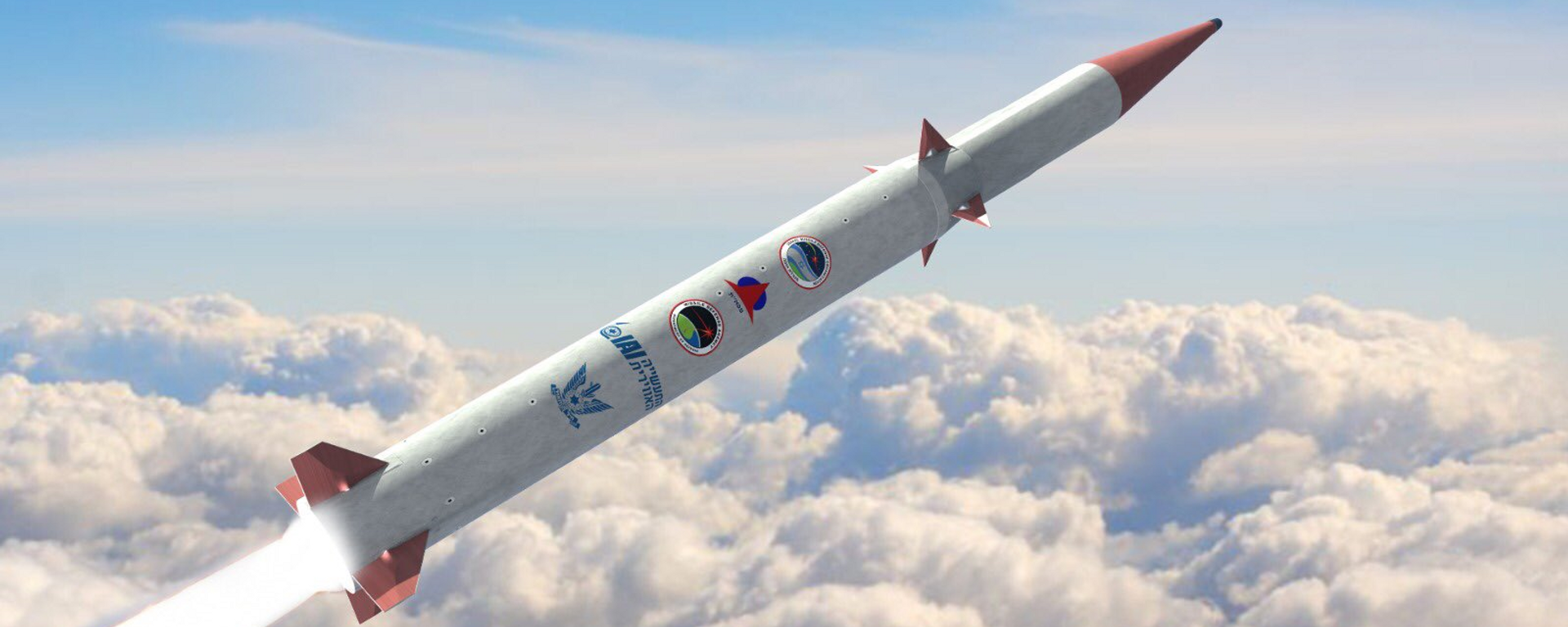
11 October 2023, 16:51 GMT
To top it off, Israel is a suspected nuclear weapons state (the country neither confirms nor denies its status, in a policy known as "deliberate ambiguity"). SIPRI estimates that Israel possesses up to 80 air and missile-deliverable nukes. US and Israeli security analysts refer to Israel’s nuclear strategy as the
“Samson Option” - a reference to the Old Testament Biblical figure Samson, who legend has it toppled the Philistine temple and buried himself and thousands of Philistines alive to prevent being enslaved. The Samson Option similarly
assumes that Israel would launch its nukes at enemies in one desperate final act of vengeance if its conventional military was ever overrun.
Israel’s likely nuclear status makes it arguably the most powerful military force in the Middle East.Iran is another major Middle Eastern military powerhouse. With an active duty standing Army of
350,000 troops (plus 37,000 Air Force personnel, 18,000 Navy servicemen and 15,000 Air Defense troops), and a 230,000 troop-strong contingent of elite Islamic Revolutionary Guard Corps (IRGC) personnel (150,000 of them in the Ground Forces, 40,000 paramilitaries, 20,000 in the IRGC Navy and 15,000 in the IRGC Air and Air Defense Forces), Iran has one of the largest active duty militaries in the Middle East, plus at least 350,000 reserve personnel to call on in an emergency. The country had a military budget equivalent to about
$6.8 billion in 2022.
Like Israel, Iran has its share of conflicts providing its forces with crucial combat experience. This includes the brutal Iran-Iraq War, which kicked off in September 1980 as Saddam Hussein,
backed up by the United States, kicked off a war of aggression to seize Iran’s oil-rich province of Khuzestan. The conflict quickly turned into a quagmire which lasted through most of the remainder of the decade, with the two countries reaching a ceasefire and peace agreement in 1988.
Up to 600,000 Iranian and 500,000 Iraqi troops were killed in the conflict, along with over 100,000 mostly Iranian civilians.The Iran-Iraq War provided Iran with three important lessons:
1.
The West can’t be relied upon for weapons. The US and its allies invoked an arms embargo on the country after the 1979 Revolution.
2.
Drones can be an effective tool in warfare. It was during the Iran-Iraq War that the Islamic Republic developed its very first drone, the Mohajer-1 surveillance UAV.
3.
The development and use of weapons of mass destruction isn’t necessary to ensure survival. Iran did not retaliate to Iraqi gas attacks on troops and cities, notwithstanding its right to do so under international law, with chemical attacks of its own, and destroyed its chemical arms stocks in the 1990s before ratifying the Chemical Weapons Convention. Iran’s leaders have subsequently pledged repeatedly not to produce WMDs of any kind, including nukes, on religious grounds.
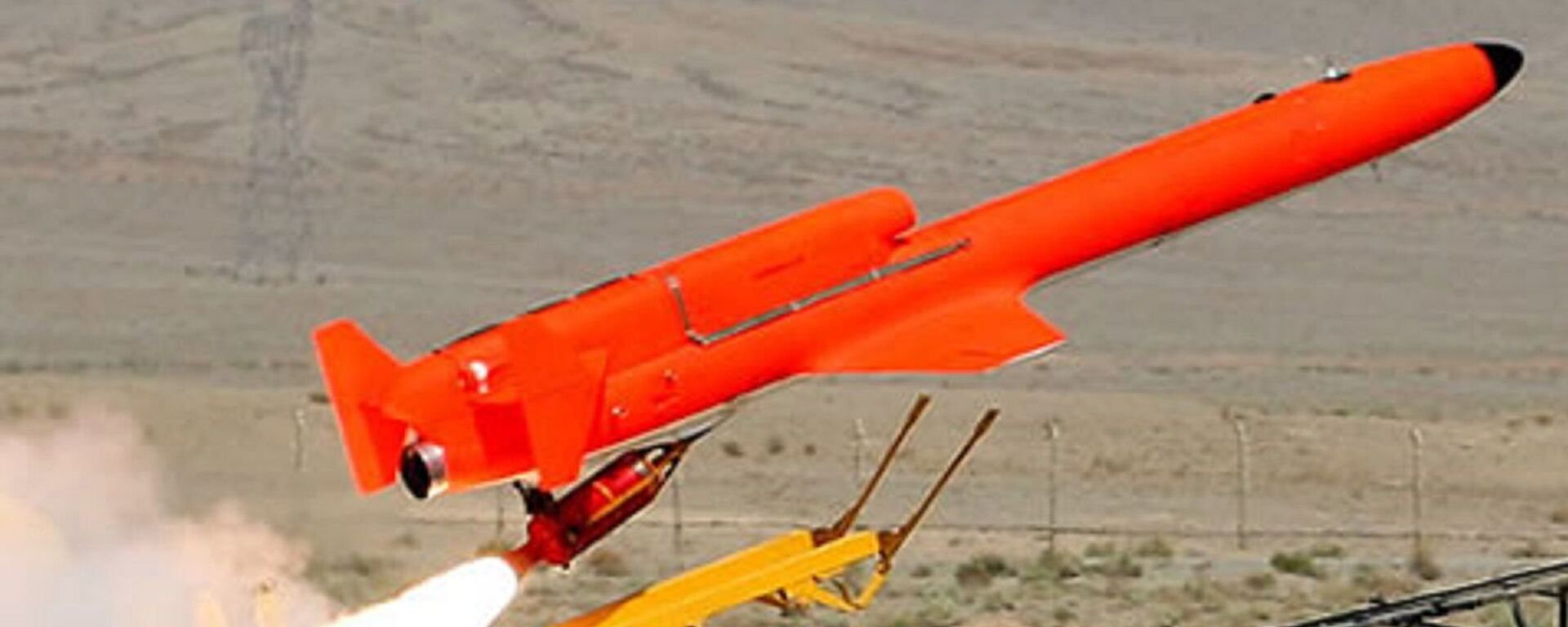
5 October 2023, 18:50 GMT
Between the late 1980s and today, Iran has been involved in several other conflicts, taking on separatists and foreign-backed terrorists seeking to overthrow the government, providing Hezbollah with advisory assistance during its 2006 conflict with Israel, and supporting the Syrian and Iraqi governments against jihadist militias, including Daesh (ISIS),* in the 2010s. Iran has also had several military close calls with the United States, destroying a US spy drone violating its airspace over the Straight of Hormuz in 2019, and raining ballistic missiles down on US bases in Iraq after the January 2020 unprovoked US assassination of IRGC Quds Force Commander Qasem Soleimani in Baghdad. Fortunately, neither incident sparked a broader war.
Along with Israel, Iran has arguably the most sophisticated domestic military industry in the Middle East, producing an array of homegrown reconnaissance, strike and kamikaze drones, a range of ballistic and cruise missiles (plus a new hypersonic missile – the Fattah, unveiled earlier this year), advanced air and missile defense systems like the Bavar-373 and the 3rd Khordad, and an array of radar and electronic warfare systems.
On top of that, the country’s geography and network of alliances provides Tehran with a range of capabilities which further increase its overall military strength. These include security partnerships with Syria and Lebanon’s Hezbollah, which allow Iran to project power to the shores of the Mediterranean Sea, and Tehran’s unique ability to close off the Hormuz Strait – the crucial maritime trade artery through which some 30 percent of the world’s total oil passes. In the event that tensions with Israel the United States ever went hot, Iran would have the option of using its coastal defense systems and other missiles to target US-allied commercial cargoes in the Gulf and sparking a global economic crisis. These capabilities make Iran second in the list of major Middle Eastern military powers.
Turkiye, the nation with the second-largest military in NATO after the United States, is also indisputably one of the greatest military powers in the Middle East. With 355,200 active duty personnel and 378,700 reservists, and a string of bases dotting the region, Turkiye’s support (or lack thereof) could prove crucial to any operations in the region by its Western allies.
According to IISS
data,
260,200 of Turkiye’s 355,200 troop total consist of Land Forces personnel, with another 50,000 accounted for by the Air Force, and 45,000 by the Navy. On top of that are an estimated 156,800 paramilitaries, including the Coast Guard and the Gendarmerie – the branch of the Ministry of Interior responsible for the maintenance of public order, which in wartime can be subordinated to the Land Forces.
Turkiye allocated
$16 billion to defense and security in 2023, and has a fledgling military-industrial base producing everything from drones (such as the deadly Bayraktar reconnaissance and strike UAV) to warships, homegrown cruise missiles, ATAK helicopters, and the Altay main battle tank, a derivative of the South Korean K2 Black Panther.
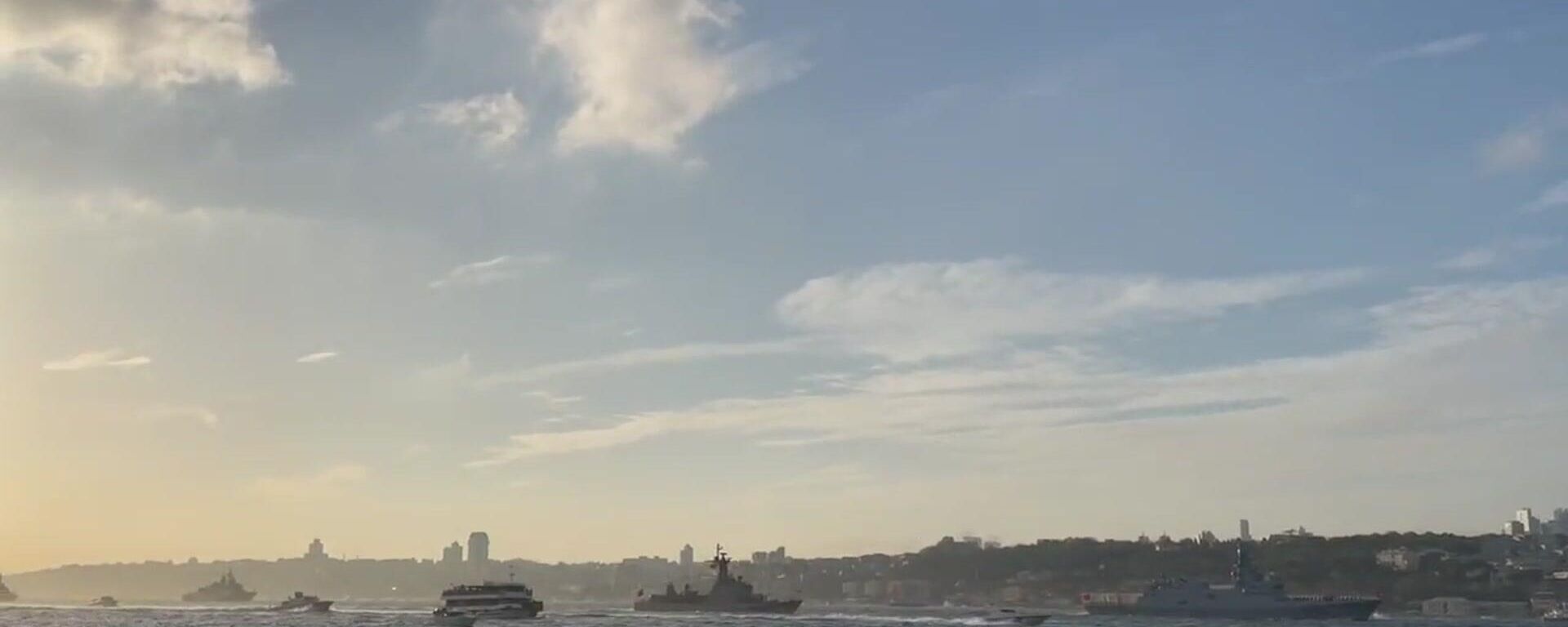
29 October 2023, 19:05 GMT
Turkiye’s recent record of military operations has been generally successful. Successfully engaging Kurdish militias in the country’s southeast demanding greater autonomy or independence from Ankara, and launching incursions into Syria and Iraq to take on militias allied to these fighters, Turkiye also joined forces with other NATO powers in the wars in Bosnia and Kosovo in the 1990s, and in the 2001-2021 War in Afghanistan (which the coalition ultimately lost). Turkiye also aided the NATO-led campaign to destroy Muammar Gaddafi’s Air Force in Libya in 2011, helping to lead to his ouster. Turkish support has been crucial in enabling the Tripoli-based Government of National Accord to hold on to power in Libya’s western half.
Turkiye has access to a number of military bases abroad, including Albania (at the Pasha Liman Base), Azerbaijan (a "Ceasefire Observation Center" in the Karabakh region), Bosnia, Iraq, Kosovo, Libya, Northern Cyprus, Qatar, Somalia, and Syria (Damascus has repeatedly demanded that Turkish forces be withdrawn, with the issue remaining the major sticking point in the normalization of relations).
In the context of the Gaza crisis, Turkiye has been careful to voice its diplomatic support for Palestine and Hamas, while simultaneously working to prevent taking any steps against Israel which Washington or Tel Aviv might consider hostile. Ankara recalled its ambassador to Israel for consultations last week over the “humanitarian tragedy in Gaza,” and supports an immediate ceasefire.
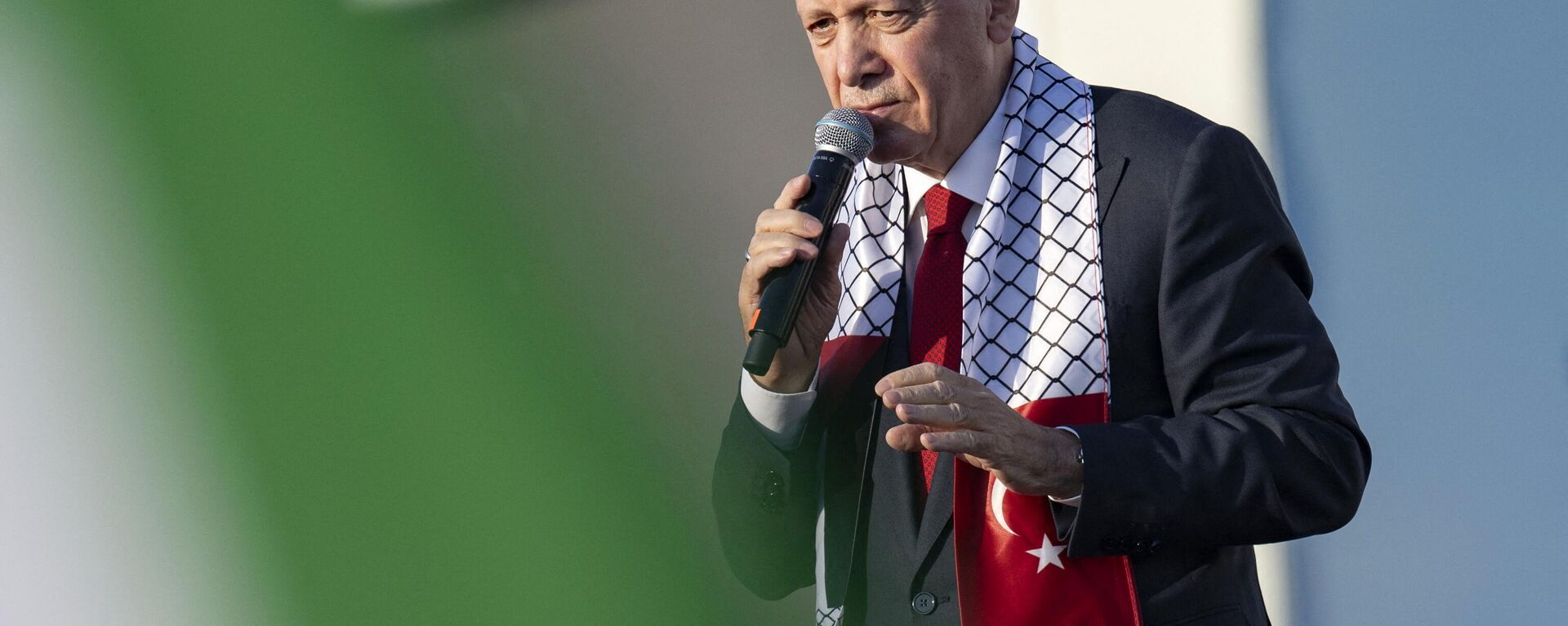
29 October 2023, 09:05 GMT
Egypt, the country directly next door to the crisis unfolding in Gaza, is also considered to have one of the most powerful militaries in the Middle East,
ranking 14th among 145 countries reviewed in the Global Firepower Index’s 2023 report. The Armed Forces have
438,500 active duty personnel and 479,000 reservists to call on in a crisis. This includes an Army consisting of professional soldiers (90,000-120,000) and 190,000-220,000 conscripts, an Air Force with 30,000 active and 20,000 reserve personnel, the Air Defense Forces (80,000 active duty personnel and 70,000 reservists) and the Navy (consisting of 18,500 active duty and 14,000 reserve personnel).
Egypt hasn’t fought a major war on its soil since the Yom Kippur War of October 1973. Egyptian forces joined the US-led coalition in Iraq during the 1991 Gulf War, and have taken part in the US-led "war on terror," including jihadist insurgencies in the Sinai Peninsula. The military took part in the ouster of President Mohamed Morsi in 2013, followed by a crackdown on the Muslim Brotherhood. Egyptian forces have also joined in the Saudi-led operation in Yemen which began in 2015.
Egypt has a military budget of
$4.6 billion in 2022, and relies on foreign partners for most of its military equipment (importing some
$48.1 billion from the US between 1948 and 2017 alone), with Russia another major source of arms imports.
Egypt has joined much of the international community in calling for a ceasefire in Gaza, and has allowed aid to trickle through the heavily fortified Rafah Border Crossing with the Strip.
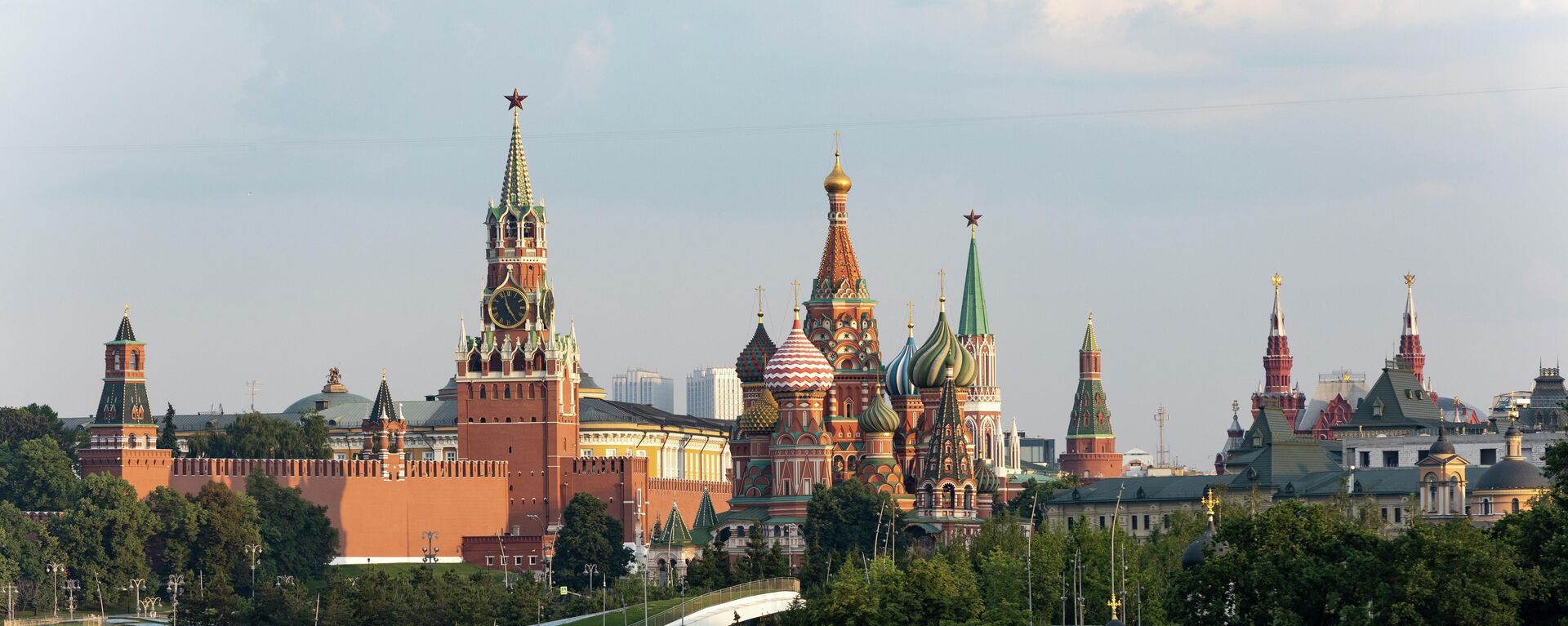
7 November 2023, 10:23 GMT
The Kingdom of Saudi Arabia ranks
fifth in the Global Firepower’s ranking of the top five military powers in the Middle East, and
22nd overall. With a military budget of a whopping
$69.1 billion in 2023, country has consistently ranked among the top ten countries in the world in terms of biggest military budgets (ranking fifth in 2022, for example).
The Saudi Armed Forces have 257,000 active duty personnel, and are divided into the Army (75,000 troops) the Navy (40,500, including 10,000 elite Marines), the Air Force (25,000), the Air Defense troops (16,000) and the Strategic Missile Force troops (2,500 personnel).
The Kingdom relies on the United States for an overwhelming majority (
nearly 80 percent) of its military equipment, with France and Spain making up much of the rest (6.4 percent and 4.9 percent, respectively). This equipment includes things like Abrams tanks and Bradley fighting vehicles, Apache attack helicopters, Patriot missile systems, and other advanced US systems.
Saudi Arabia emerged among the victors during the 1991 Gulf War as part of the US-led coalition, and took part in the Operation Southern Watch no fly zone in Iraq through the 1990s. The Kingdom also joined the Western coalition in the 2014-2017 war against Daesh.
Saudi Arabia has joined other powers in calling for an immediate ceasefire in Gaza, and the Palestinian-Israeli crisis has reportedly put normalization talks with Israel on hold. The Gaza crisis, combined with the surprise Saudi-Iranian normalization of relations pact reached in March, and Riyadh’s move to join the BRICS bloc of nations, has sparked concerns from Washington about the Kingdom’s potential geostrategic drift.

11 November 2023, 18:39 GMT
* A terrorist group outlawed in Russia and many other countries.









